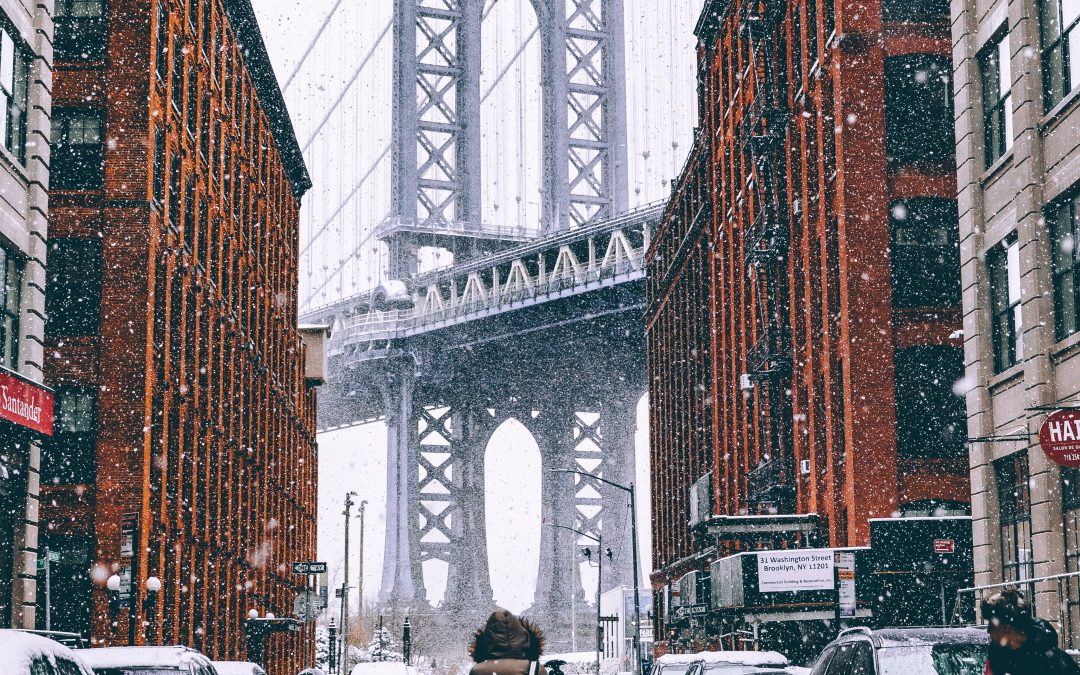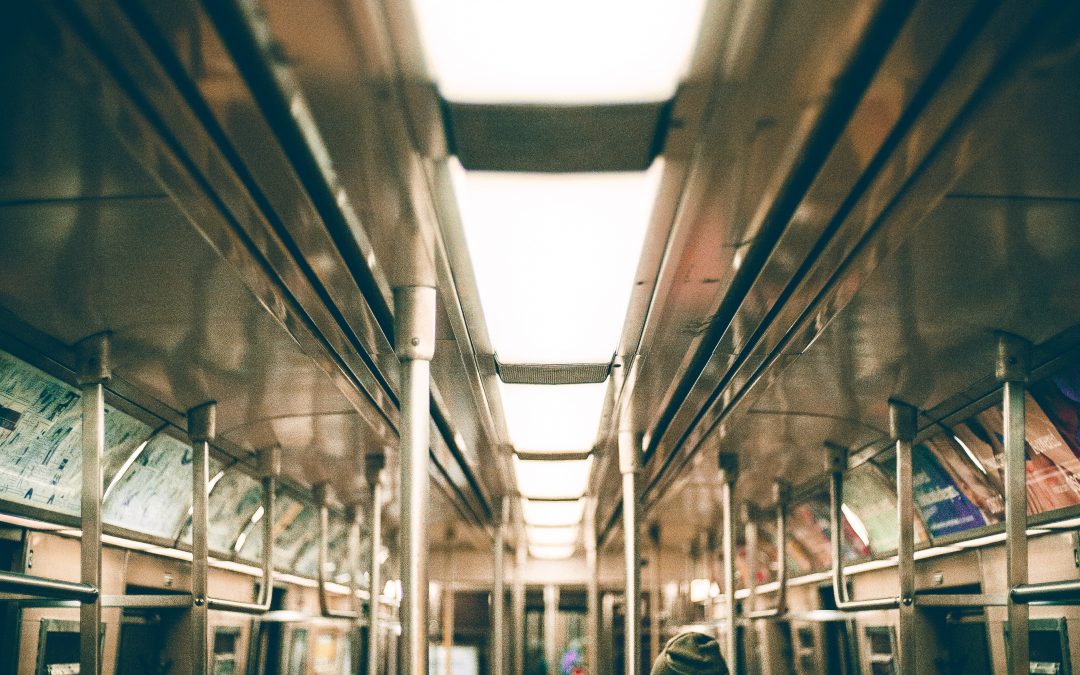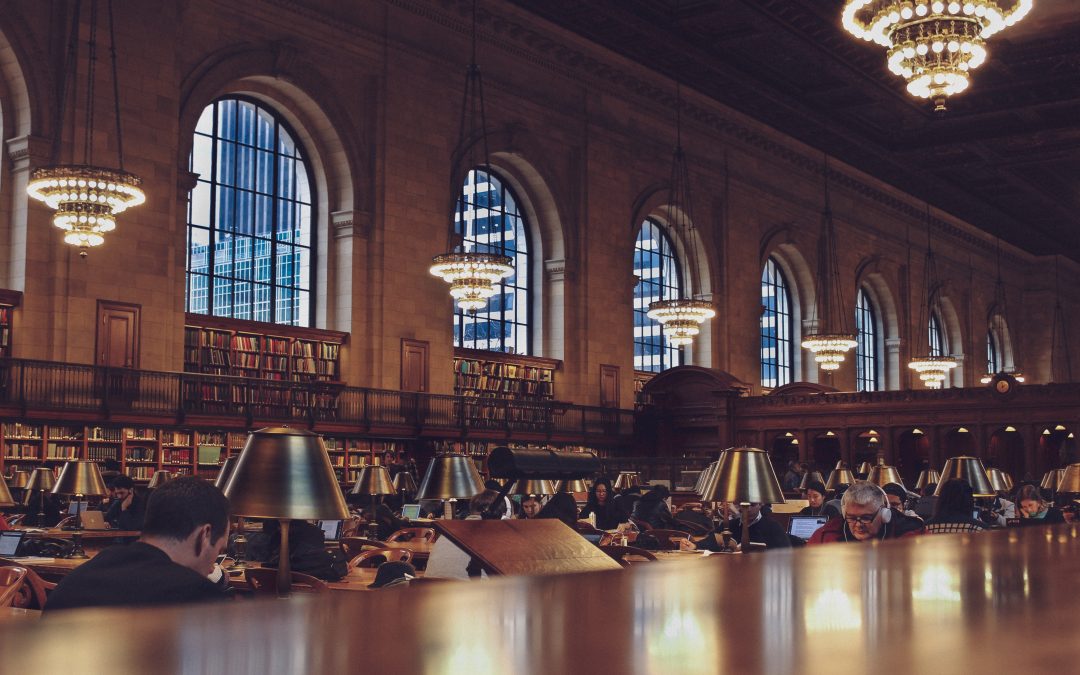
by BCB Property Management | Feb 25, 2016 | History, New York City
Perched mightily above Pennsylvania Station in Midtown Manhattan, Madison Square Garden’s formidable presence is apparent at a glance. The arena defies all logic in name: far from Madison Avenue, it is neither square nor inclusive of anything resembling a garden.
A venue often graced by famous musicians, athletes, and world leaders, Madison Square Garden may not match its name, but is nonetheless an iconic New York City landmark. It’s also the fourth iteration of its kind. Having endured makeovers, demolition and reconstruction time and again in several locations over nearly a century and a half, the final product is one of monumental stature and significance
Madison I through III: Grand, but damned
Madison Square Garden’s epic history begins at Fifth Avenue and 23rd street, southeast of its current location in what is now the Flatiron District.
Formerly occupied by a railway terminal, the space was leased by P.T. Barnum from Cornelius Vanderbilt and transformed into venue branded the Great Roman Hippodrome, or Barnum’s Hippodrome. Barnum seized an opportunity to build a large enclosed event space once Cornelius Vanderbilt moved his railroad to Grand Central Terminal.
Barnum went on to build a 274-foot oval center laced with wooden benches wrapped around the building’s performance space. The building would only draw big crowds for a few events at the time, so there was a revolving door for proprietors. The original construction was far from perfect: a tent was used to seal the of the venue, making it very difficult to host during inclement weather.
After five years, William Vanderbilt reclaimed the venue and gave it a new presence that would kickstart it’s future legacy. On May 31, of 1879, a gala ceremony presented the new name: Madison Square Garden. It was used to host boxing matches and circus performances among other fantastical events.
Though Vanderbilt would crown the name that would last until present day, we can’t say the same for the actual MSG building. Madison I, as it’s called today, was sold to a syndicate that included Andrew Carnegie and J.P. Morgan. They demolished the building in 1891 and commissioned the second rendition: Madison II.
The second rendition was born from the mind of renowned architect Stanford White; featuring Moorish architecture and 33 stories, it towered over Madison Square Park. Madison II was the second tallest building in Manhattan at the time, and its main area was the largest in the world with room for 8,000 seating and thousands more standing.
After its grand opening in 1920, the new tower had a 1,200-seat theater, a concert hall that could hold 1,500 persons, and the largest restaurant in the city. It even had a roof garden, making the name more appropriate. The building cost $3 million in total but was doomed to suffer the fate of its predecessor. In 1925, the mortgage owners, New York Life Insurance Company, decided to tear the building down to replace it with their new headquarters.
Madison III, it would be determined, was to end in rubble as well. Built on 8th Avenue between 48th and 50th, the enormous venue boasted a massive seating capacity of 18,496 people, seats that would fill to the brim for the Ringling Brothers, the New York Knicks and Rangers, and the American First Committee peace rallies.
It was nowhere near Madison Square, but the name stuck around along with another moniker: “The House That Tex Built.” This name is in reference to owner and operator Tex Rickard, who built the arena in just 249 days at a cost of $4.75 million.
Madison III had a pretty solid 37-year run, but was demolished when the Madison Square Garden we know and love today opened in 1968.
Madison IV: The final era?
The current Madison Square Garden, located at 7th Avenue between 31st and 33rd streets, opened as a by-product of the demolition of the original Pennsylvania Station’s above-ground hub. Irving M. Felt purchased the air rights from the Pennsylvania Railroad and built Madison IV: a venue that would outlast its predecessors.
The new structure was unique because it was one of the first buildings to be built above an active railroad station. Madison Square Garden is located in the sports and entertainment building formally known as the Pennsylvania Plaza, and touts a brand that acts as a monument in not only Midtown Manhattan, but the world.
The new building was built around its core cash cows: Circus and talent acts, the New York Rangers, and Knicks basketball. Yet, the space still earns revenue hosting one-off events of all types, from Democratic and Republican conventions to the Pope’s inductee ceremony.
And so, between 1968 and today Madison Square Garden has persisted, and has garnered the title of “World’s Most Famous Arena.” Currently, Madison Square Garden hosts roughly 320 events a year and saw $1.62B of revenue in 2015.
Both before and after the current Madison Square Garden came into existence, the institution has endured an array of makeovers and reconstructions, housed an entire history of events, and switched hands in ownership again and again. That’s certainly a storied history; one that’s seen generations of people joined by music, laughter, team spirit and applause.
Today it exists as one of New York City’s most fruitful revenue generators. While this matters from an economic standpoint, it’s safe to say that Madison Square Garden’s financial benefit is matched, if not exceeded, by its inherent culture and history.
Featured image: Diana Robinson via Flickr

by BCB Property Management | Feb 17, 2016 | History, New York City
New York City’s winters aren’t to be taken lightly. Winter of 2015 amounted to one of the largest snowstorms that this city has ever seen. We decided to take a look at the snowstorms that give NYC winters their reputation. Below are the top five biggest winters and how they looked on the ground.
February 11–12, 2006 (26.9 inches)
In 2006, the North American Blizzard dumped heavy snow across the Mid-Atlantic and New England states. Major cities received at least a foot of snow and New York City got the brunt of the storm. New York City saw the largest amount of snowfall of 26.9 inches, the most since at least 1869.
January 2016 (26.8 inches)
The January storm wasn’t expected to be as massive as it was. Surprisingly enough, the rapid snowfall killed three people in Queens and Staten Island. Ultimately, New York City recorded 26.8 inches of snow that weekend. Forceful winds were a driving force behind the lasting impact of the storm.
December 26–27, 1947 (25.8 inches)
The third largest blizzard dropped 25.8 inches on New York City in just over two days. The harsh storm fell heavy and it wasted no time sticking to the ground. The storm killed at least 77 people and you can imagine how impactful it was during 1947.
March 11-14, 1888 (21 inches)
New York has been seeing destructive snowfall since as early as 1888. The four-day blizzard put the city in a frenzy and left over 200 locals dead. Through March 11-14, 21 inches of snow fell among New York City, Massachusetts, New Jersey, and Connecticut. Winds were blowing at 70 miles per hour and travel operations were brought a cease.
The city couldn’t function through such a massive storm. Trains were even brought to a halt with passengers still onboard.
February 25–26, 2010 (20.9 inches)
Titled as the fierce “snowicane”, the NYC snowstorm of 2010 brought the city 20.9 inches of snow. The snowfall traveled through above-freezing temperatures, leaving a slush mixture of rain and snow which can be just as difficult to deal with. Strong winds added an additional element that made the snowicane more of a disruption among New York City streets.
The list of historic NYC winters is monstrous. The phrase “white winter” may have even originated here. Have you had to deal with any of the snowstorms above? If so, let us know how you coped

by BCB Property Management | Jan 27, 2016 | History, New York City
There are a handful of landmarks that define the glory and grandeur of New York City. The associations and memories that visitors have with these spaces gives the city its rich cultural texture. From Central Park to the Brooklyn Bridge, Carnegie Hall to the Guggenheim, to walk through this city is to experience its storied past and bustling present.
Penn Station used to be one of those iconic Manhattan landmarks. Widely regarded as one of the stateliest, most majestic buildings in the city from its opening in 1910 to its unfortunate demolition in 1964, Penn Station evoked feelings of grandeur and awe in all who passed under its soaring ceilings and vaulted glass windows.
By the 1950s the advent of air travel and increased highway driving had cut into Penn Station’s profits considerably, making it difficult for the Pennsylvania Railroad to maintain and clean the huge station. Plans began to emerge to move the station entirely underground, with air rights being sold to make way for the new Madison Square Garden and Penn Plaza. Supporters of this plan argued that maintaining the building had become cost prohibitive, but New Yorkers rallied with cries of “Don’t amputate—renovate!”
As so often is the case when history makes way for progress, the majestic old Penn Station was demolished, and in its place, the less attractive version of Penn Station we’ve come to know today. Fluorescent lighting replaced those vaulted windows, and air conditioning replaced the breezy open air atriums. The demolition sparked a new national interest in preserving national landmarks, with new laws being created that would at least protect Grand Central Terminal from a similar fate.
While few have praised the aesthetics of Penn Station as it has existed in its rebuilt form since 1964, the station has continued to be a valuable workhorse for commuters, ushering 650,000 people in and out by train every day. To put that figure in perspective, that’s more people than all the daily travelers who pass through JFK, LaGuardia, and Newark airports combined!
But why should a building have to choose function over form? Can Penn Station be beautiful and useful? These days, architecture enthusiasts and those who miss the grandeur of the old Penn Station can rejoice over some good news: Brooklyn based architecture and design firm Atelier & Co. has submitted plans to rebuild Penn Station to restore the building’s former glory. Here’s how the three part plan would restore rail travel to its glory days:
1. Take a Page From Penn’s Original Design Plans
Looking to its original design by architecture firm McKim Mead & White, Atelier will use hundreds of the original designers’ drawings, which have been preserved in the archives of the New York Historical Society. There are also countless photographs that capture not only the original design, but also the feeling of dignity and importance that Penn carried for travelers. These artifacts will be used to kickstart the design process, which aims to restore a glass roof, spacious floor plan, and vaulted ceilings.
2. Make Penn More Functional For Today’s Commuters
Penn Station was originally designed primarily to serve passengers traveling from city to city. Today Penn Station mostly hosts passengers from the New Jersey Transit and Long Island Railroad. The underground labyrinth of subway and commuter rail lines is dark and crowded, and Atelier hopes to see some of this traffic diverted to Moynihan Station, the new Amtrak station currently being constructed across the street. Freeing up some of the congestion of Penn Station would go a long way in restoring the feeling of being in a grand open space filled with light.
3. Give the Surrounding Area a Facelift
The third leg of Atelier’s proposed plan involves giving a much needed beautification process to Penn’s surrounding areas. This would likely require the removal of Madison Square Garden, which sits atop Penn. As the stadium’s lease runs out in 2023, perhaps that isn’t such an unrealistic expectation. Imagine if Penn Station was surrounded by a great new outdoor park for pedestrians to enjoy as they waited for their trains.
Merging the Past with the Future
The Atelier Plan could potentially cost upwards of $2.5 billion. That’s a pricey ticket, especially when the plan is contingent on the movement of certain buildings. It remains to be seen whether the Atelier plan for Penn Station will become a fully funded reality, but it’s heartening to imagine a future New York City that reclaims a bit of its old world beauty, nostalgia, and architectural majestry.

by BCB Property Management | Jan 25, 2016 | History, New York City
The Long Island Railroad is one of the most prominent NYC train routes, and not just because it stretches to the depths of Long Island. Originally, the LIRR was built by the Pennsylvania RR to shuttle people from New York to Boston. That first iteration became known as the Long Island Railroad Company.
Most New Yorkers are not aware that the train’s original route was supposed to include a couple of different kinds of travel. Travelers would ride the railroad to Long Island’s North Fork from Manhattan, then travel by boat to Connecticut where the train would reconvene. From there the rail would run from Providence to Boston. The segmentation was solely because railroad engineers deemed it impossible to travel on land through the terrain of Connecticut during the 1800s.
Though the thought was in the right place, it wasn’t practical because the early structure of the LIRR didn’t consider the needs of Long Island residents. Instead, the route ran through the more unpopulated areas of Long Island so there wasn’t much of a convenience factor.
Amazingly enough, the “unlikely” railroad path through Connecticut, considered to be impossible before, was eventually built and the LIRR’s sole purpose was eradicated in one fell swoop. The LIRR had to adjust their transportation model to stay afloat. They adapted by focusing primarily on local passengers — they built additional lines to reach the different areas outside of the mainline throughout Long Island.
In 1854, the LIRR started working towards this goal by developing remote stations but their progress was too slow. During the building period, a few other competitors had established routes to fill the need for Long Island riders. For almost a decade, the various railroads coexisted with one another but eventually there was too much competition for them all to sustain.
About 30 years later, the LIRR was taken over by Austin Corbin and he managed to lead the railroad to its greatest expansion yet.
Corbin’s acquisitions of already existing lines and stations led to the LIRR’s solid foundation at the time. He began planning for the railroad’s direct access to Manhattan with touchpoints at their Atlantic Branch under the East River tunnel and their Grand Central Terminal station.
The Pennsylvania Railroad was also planning their new route across the Hudson River to reach Manhattan. Talks between the LIRR and PRR started buzzing in 1900 and soon after the PRR bought controlling interest in the LIRR for $6 million. This would spark the New York Tunnel Extension from NJ, to Manhattan, to Long Island City. The new Pennsylvania Station opened in 1910, serving only LIRR trains for over two months. Eventually they opened the station up to other tracks, because all New York needs is more congestion!
Governor Nelson A. Rockefeller proposed that the state of New York City buy the LIRR in 1965 alongside the MTA (then known as the Metropolitan Commuter Transportation Authority). This proposition became a reality when the PRR went bankrupt in 1970. Governor Rockefeller managed to act on his plan to purchase the LIRR and implement improvements that would replace their outdated carts with M1 Cars that were exponentially more reliable and passenger friendly.
Under the MTA, the LIRR saw not only additions to its route but the actual train saw vast improvements as well. Air conditions carts that were both more reliable as far as safety and functionality helped reintroduce the LIRR.
We also take a look into the evolution of New York City’s subway cars. Learn more about how NYC transportation has grown over the years!

by BCB Property Management | Nov 24, 2015 | History, New York City
New York City is home to one of the most intricate subway systems in the world. As our transportation system continues to develop so do the subway cars that move the 5.6 million people per day.
As of 2014, there are 6,384 subway cars on the NYC transit roster which is a vast expansion from the beginnings of the New York subway system. Over the 110-year history, NYC subway cars have grown in abundance and interior design.
Efforts have been made to make universal changes to the exterior look of the subway cars. But there have been amenities added that have changed the transit experience gravely since it’s early years.
Here’s how the NYC subway system has evolved and if you want to see any of the historic cars in person, visit the New York Transit Museum in Brooklyn.
Wooden Bodies
At the time, the NYC transit system was referred to as the “elevated railway” and its first line was built in 1868. Before the wooden body subway cars, the elevated railway was run by steam engines that spewed ash and cinder to pedestrians below the train line.
In 1907, electric trains were introduced to the railway; allowing train car operators to run cleaner locomotives like the wooden body cars above. The train car was constructed with steel under-frames with wood covering overtop. The train doors were opened manually by the conductor and a small bell signified that the train was boarded and ready to continue transit.
Articulated Cars
Subway cars reached capacity in the 1920s so the NYC transit system made a design change using an articulated subway called the Triplex.
The model connected all train cars with no doors separating them to allow for more space and free reign to move for passengers. The Triplex was in service between 1928 and 1965 and could seat about 160 in total. The articulated cars were 137 feet long and provided the solution to the capacity issue at the time.
The Metropolitan Transportation Authority proposed bringing back articulated trains to its future 20-year outlook plan.
Stainless Steel Cars
With a focus on sustainability, New York City instituted a train car change that would save them money in the long-term.
In 1964, the Transit Authority commissioned 600 stainless steel cars (R-32 model number). The intent was to save money over the long-term because the use of lighter metal reduced the overall weight of the train cars. Ultimately, this change would lower the amount of electrical power to move them. The stainless steel cars weren’t too appealing but they proved to last longer than any other design. The R-32 is still used today on the C line.
Air conditioned cars soon followed in the late-1960s and launched an era of revolution to the transit system. Air conditioning cars had been a wish for locals for decades prior but ceiling fans were of use up until this point.
Beginning with the R-38 model pictured here, air conditioned train cars were a staple by the 1980s.
Modern Day Cars
Known as the R188, the modern day subway cars are similar in build but renown in their features. Today’s train cars now have a digital display on the outside to notify travelers of the arriving train line. The subway cars are also rigged with new communication-based train control technology, creating the capability for countdown clocks and a higher frequency in trains.
New York City subway cars have grown to accommodate the busy stream of travelers each and everyday. From the wooden body cars to the technologically-intertwined modern day cars, the New York City transit system has put a focus in evolving their transportation methods over the years.

by BCB Property Management | Oct 29, 2015 | History, New York City
The prestigious New York City Public Library located on 42nd St. and 5th avenue is one of the more historically known public buildings not only in NYC but in the world as well. The entrance to the massive hall is guarded by the NYPL’s iconic lion statues. Although it’s surprising to tourists when they find out that this building is just one of the several branches of the NY Public Library. The NYPL has branches throughout Manhattan as well as in the Bronx and Staten Island. Tourists also mistake the midtown location for a museum and rightfully so. But even the locals have gone unintroduced to some of the intricate facts that live within the New York Public Library. Here’s some secrets about the NYPL that you should know about:
The NYPL main building was once a reservoir
The main source of water for New York City in the 19th century was from the Croton Reservoir, with its central location at 42nd and 5th ave, the current grounds of the NYPL. The Croton Reservoir was the main source of water until it was no longer sufficient to supply NYC as the city grew in population and location around 1880. The NYPL was founded just 15 years later and took over the now vacant location in 1895. It officially opened in 1911.
The NYPL’s water fountains don’t actually work
The water fountains at the main branch of the NYPL are all dried up so if you haven’t found out, their water fountains don’t actually work. But the library does have plans to restore their outdoor fountains on 5th avenue. A grant from the Wilson Charitable Trust supports a restoration project to bring life to the historic fountains on the main campus NYPL campus. The fountains are located below either side of the main stairway and this marks the first time in nearly three decades that they have been operational.
The NYPL underground storage exists beneath Bryant Park
Bryant Park just became a bit more interesting. The next time you’re taking a stroll around the park, know that six feet beneath you exists 40 miles of library shelves holding 1.5 million books and 500,000 reels of microfilm. The storage project for the NYPL main building cost $24 million and was instituted from the library’s opening in 1991. The underground hub has an 120-foot tunnel that connects it to the main library. Although that’s only a section of the library’s underground storage. Underneath the Main Branch is an original storage space comprising of seven levels of underground shelving made of Carnegie steel. The NYPL has outgrown not only its facility storage but all underground storage as well. The organization has even moved over three million items off-site to their Princeton, NJ location.






